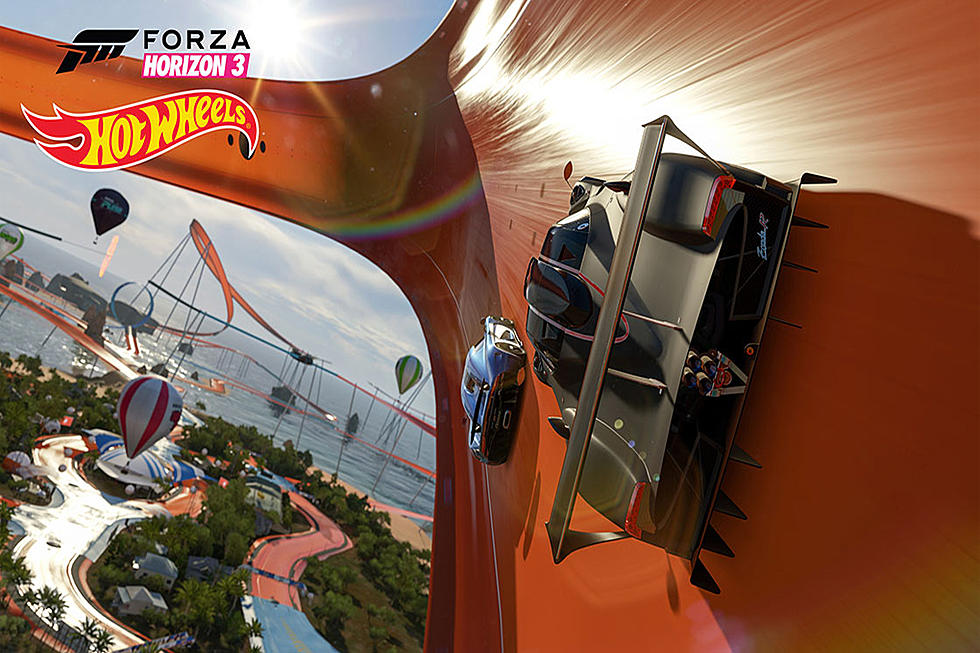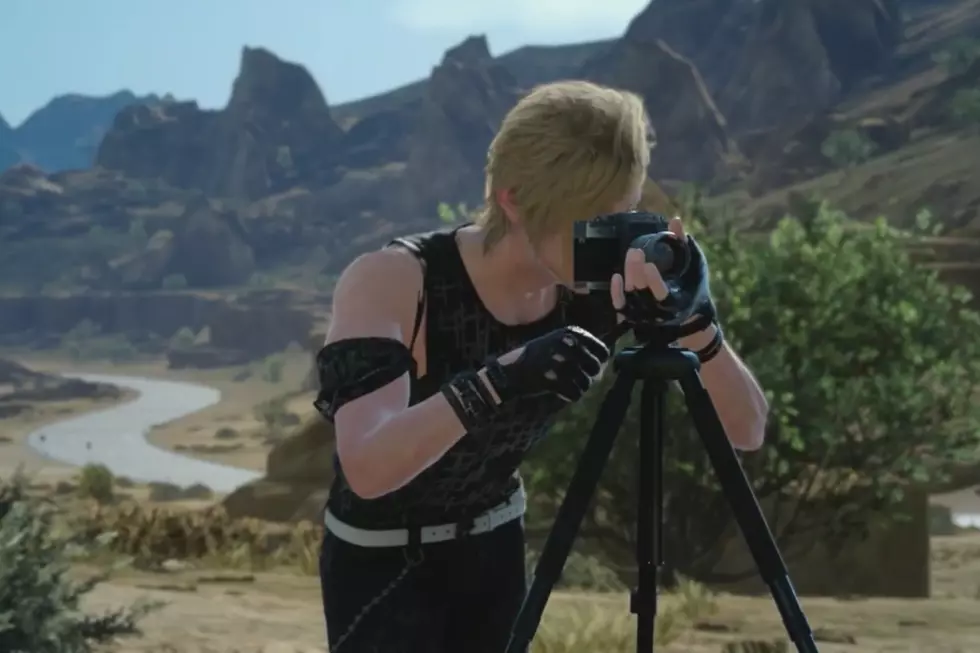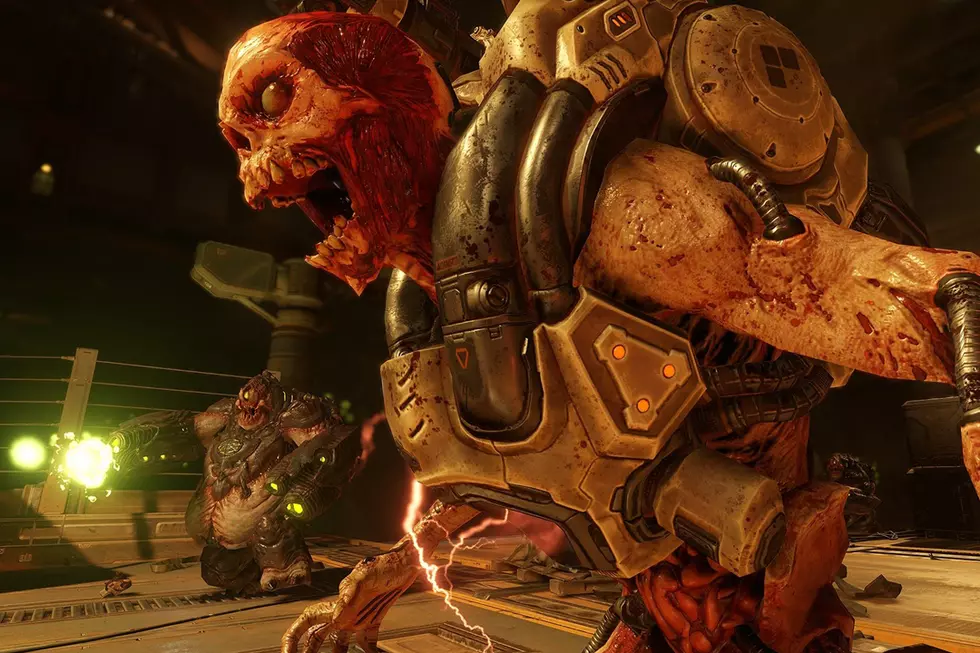
The History of Fighting Games: Part 1
There is no genre of video game that has seen more ups and downs, more personal re-invention, more fervent support by fans and developers alike than fighting games.
The simple format of two guys standing on opposite sides of a screen and trying to punch each other to death has quickly become a professional gaming craze. The so titled “FGC” (fighting game community), holds major events all over the world that attract thousands of competitors, from the best in the world who treat fighting games as their job, to couch warriors who just want to sharpen their skills against the greatest. EVO, the world’s biggest fighting game tournament, broke Twitch.TV records this year, as millions of viewers tuned in to watch players chuck Hadoukens at each other. Fighting games epitomize the idea of “video games as sport,” boiling down the format to two guys squaring off against each other to see who has better honed their gaming skills.
But, the huge popularity spike that the fighting game genre and fighting game community has seen in the past couple years has set some pretty phenomenal changes in motion. We are now seeing fighting games go free-to-play with titles like Tekken Revolution. We are seeing popular franchises like the Marvel VS. series be killed by licensing deals, leaving tournament communities dead in the water. We are seeing tournament communities struggle with coming up with a rule set that integrates our new ability to patch games regularly and offered downloadable content. We are seeing indie games like Skullgirls claw their way up out of obscurity to challenge some of the most beloved names in fighting game history. Heck, we are even seeing minimalist fighting game parodies, like Divekick, host tournaments for thousands of dollars in prizes.
So as we wait for Ultra Street Fighter IV and Guilty Gear Xrd -SIGN- to come out, we have decided to look back on the fighting game genre and see how we have gotten here. To do that, though, we have to go far back in time, back before 3D graphics, back before the fighting game crash of 2000, back before the NES was a household name, and back before Street Fighter was even a glimmer in Takashi Nishiyama and Hiroshi Matsumoto’s eyes. Yes, we are going to visit the strange and bizarre world of bellbottoms, afros, and vector based arcade cabinets in that weird decade known as the 1970’s. Groovy, man.
What Is a Fighting Game?
"What the very first fighting game ever made?" is a matter of some debate. Some like to fast forward to Street Fighter II as it was the first game to solidify the fighting game formula. But before there were health bars and rounds and combos, there were plenty of games that featured one on one, winner take all combat. The earliest of these can be traced back to 1976, but there are two titles that can honestly be considered the first one on one combat games… if you don’t count Pong that is. These titles are Knights in Armor and Heavyweight Champ.
Knights in Armor was a 1976 jousting simulator made by Project Support Engineering. Players would choose to be either the black or white knight and would face off against each other in a series of eight, 10, or 12 jousts. The primary control players had over their characters was the ability to move them and line up their lances, but the game wasn’t much deeper than that. Since it focused on jousting and jousting only, its status as a fighting game is suspect.
That same year, Heavyweight Champ by Sega was probably what most people envision when they think of a fighting game. It was a simple monochrome title that featured two 2D boxer sprites going at each other. However, today the boxing genre and the fighting genre are considered two very different things. In addition, the game was controlled via an early arcade attempt at motion controls. It had two boxing glove controllers attached to levers that were moved up and down to change the height of your punch. To actually execute a punch, you thrusted the levers inward toward the machine. It’s a far cry from the quarter circle joystick motions Street Fighter players are familiar with. In 1987 the game was remade, shifting the action to a traditional behind the back boxing perspective, officially divorcing it from the fighting game genre and into a sports category.
Many similar games would come and go before we saw the next big evolution of fighting games. Warrior, a 1979 vector graphics game by Vectorbeam, featured two knights battling each other from a top down perspective. It allowed players to control the swing of their sword with a joystick which gave them access to a variety of attacks. Boxing, for the Atari 2600, featured a top down view of two boxers and awarded points to players for landing different types of punches. This was also one of the first examples of a fighting game available for home consoles.
Karate Kids
1983’s Attack of the Phantom Karate Devils by Phantom Software began to look more like the traditional fighting games we know and love. This commodore 64 game had a karate master facing off against near invisible ninjas in a 2D plane. The game had a health meter, though it was counted by numbers instead of a bar. It was also one of the first fighting games to feature projectiles, though they were only thrown by your enemies. Your move-list was limited to only punching and kicking and your movement was quite restricted, so we hadn’t quite gotten the idea of true 2D fighting down yet. Not only that, but the game was only available to be played single-player, which is a shame as more primitive games like ones we already mentioned, all contained two player modes. For that reason, this game is usually called a beat ‘em up, even though it looked more like a fighting game than any that had come before it.
Ironically, this was around when the first big arcade crash of 1983 occurred. The arcade market was absolutely flooded with titles made by millions of startup companies looking to strike it rich. There were dozens of home consoles that only played a few games. This oversaturation of the market made it hard for any one company to prosper, and lead to the closing of several early age video game developers. It also lead to the slow shutdown of many arcades, dealing a damaging blow to arcade communities.
Still, there were many companies that did not give up during the first big video game recession, and one of those games was Data East, who developed Karate Champ in 1983. This arcade game featured a karate master honing his skills and fighting against several opponents in martial arts tournaments. Your character was controlled with two joysticks, and by putting in special combinations of joystick movements, you were able to perform a variety of different techniques. This is, arguably, the first game to include "special moves," though these moves weren't a secret. In fact, the game taught you how to perform them in a stage in the single-player mode.
Karate Champ was also the first fighting game to feature “canceling” as a mechanic, as certain moves could be stopped mid-animation in order to transition into forms of movement, and was the first fighting game to feature a “hold back to block” mechanic as well. Karate Champ was home to many other fighting game firsts including character intros, judges, win poses, bonus rounds, tutorials, and even voice acting, though you could imagine the digitized voice clips in the game were very primitive. However, there was still a problem. It wasn’t two player.
A year later, enter, Karate Champ: Player VS. Player, also by Data East. This was a revision of the original Karate Champ that added a second set of joysticks, and you could say that it started the long standing tradition of fighting game developers producing re-release after re-release of their fighting game hits. It was basically identical to the original Karate Champ, except you had the option of facing off against one of your friends if they put a quarter into the machine and stepped up beside you. It was incredibly addictive, but even so, it still lacked many standard fighting game trappings. There was no health bar, for example. All hits counted as a half or full point. Also, you still couldn’t select your character or stage. Fighting games still had a long way to go.
Everybody Was Kung-Fu Fighting
While Karate Champ wasn’t quite a fighting game yet, it did solidify the idea of the “karate game.” This short lived genre had you controlling a main character that ran through a gauntlet of opponents in one on one matches, like 1984's Karateka for the Commodore 64 and Apple II. It was basically a fighting game with simpler controls, one character, and only A.I. opponents. Some of these games had a versus mode, but you could only mirror match the first player character before continuing on your quests to defeat the much more interesting A.I. opponents. This “karate game” player versus A.I. formula was perfected by many other “sports” fighters, like boxing titles, that came later. Many of you may recognize the same formula in Nintendo’s hit, Punch-Out!
For a few years, Karate games were all the rage at arcades. Two 1985 games, The Shanghai Kid and Yie Ar Kung-Fu, brought the karate genre even closer to what we know as fighting games. The Shanghai Kid introduced life-bars and a very crude combo system. It also introduced the concept of high and low attacks. Gameplay, however, was mostly pattern and rhythm based, and the combo system was really only a glorified quick time event.
Yie Ar Kung-Fu, on the other hand, introduced the concept of different characters with different fighting styles. While we saw different opposing character in past titles, Yie Ar Kung-Fu focused on giving opposing characters completely different attacks based on their fighting style. It was also the first game to really use the standard HUD layout. Two lifebars were situated on opposite sides of the screen and drained toward the center as hits were landed.
Yie Ar Kung-Fu also introduced the concept of hit-stop. When you hit your opponent, the game would pause for a brief second, allowing you to register that you made contact. It did not however, have any hit-stun, and so it had no combo system to speak of. It was a highly mobile game, far more so than its predecessors, allowing you to easily jump over your opponent and attack from various angles, and it was this fast paced combat that made it popular. Yie Ar Kung-Fu dominated the arcade scene for a while, its smooth gameplay and multiple levels being its primary draw. But soon, a competitor would burst onto the scene that would combine all the greatest elements of every fighting game to come before it.
Taking the Fight to the Streets
In 1987, Capcom decided to jump on the karate game bandwagon with Takashi Nishiyama and Hiroshi Matsumoto’s Street Fighter. Up until now, many karate games only had two buttons -- punch and kick. However, Street Fighter mixed this up by introducing speed and strength into the equation. The idea was for each arcade cabinet to include two large punch pads instead of basic buttons. The speed and strength of your attack would depend on how hard you punched the pad. Unfortunately, this proved to be too expensive for Capcom to maintain, and was very draining on a player’s stamina. An alternate version was created that used cheaper and simpler buttons; simply tying each one to an individual attack. This was the origin of the six button layout that many fighting games still use today.
Street Fighter had much in common with its karate game counterparts. It utilized a “hold back to block” system for defense, used high and low attacks, featured a huge range of opponents with different fighting styles to fight against, had multiple stages to fight in, used life bars to represent health (though their positioning wasn’t as traditional as Yie Ar Kung-Fu’s was,) and allowed players to discover hidden techniques: the Hadouken, Shoryuken, and Tatsumaki Senpuu Kyaku (assigned to quarter circle forward, Z motion forward, and quarter circle back motions on the joystick respectively). These moves were very hard to pull off and were not meant to be central parts of a fighter’s repertoire as they could easily reduce an opponent’s life bar to nothing in a few hits. Nonetheless, these were the templates that were used for nearly every special move in all fighting games to come. Fun fact: the English translation of Hadoken was originally “Psycho Fire” which likely inspired M. Bison’s psycho powered moves in Street Fighter II.
Street Fighter was also the first karate game to feature a more detailed story. Players controlled Ryu, a martial artist traveling the world in order to prove his strength. While this is similar to the stories of previous karate games, Ryu did have canonical relationships and rivalries with many of his opponents. The most notable was his relationship with Ken, which was the name of the 2P color variant for Ryu.
Ken was simply a palette swap in the original Street Fighter, as fighting games had not yet evolved to allow players to select different characters yet. If a second player joined the game as Ken and managed to defeat Ryu, the single player mode would continue with Ken as the main character instead. This helped fuel the fire of arcade rivalries as players would have to fight for their right to continue playing the game.
Aside from Ken, many other Street Fighter characters made their first appearance in the original Street Fighter. Gen, Adon, and Sagat all made their debut here as did lesser known characters like Birdie from Street Fighter Alpha and Eagle from Capcom vs. SNK. Mike, a boxer from America, had a story that was a bit more complicated. Made as a parody of Mike Tyson, he faced Ryu as one of his later and tougher opponents. He was later put into Street Fighter II as M. Bison, to stand for Mike Bison. Capcom of America feared a lawsuit but did not want to give the character up, so they gave him the name Balrog, which was the original name for the pretty boy we now know as Vega. They then gave “M. Bison” to the dictator figure who was originally named “Vega”, leaving our current Vega to inherit the Vega name…
Did you follow all of that? It's OK if you didn't because the official word, for now, is that Mike has been ret-conned to be a completely different character from Balrog, but at least we can say he got his inspiration from the original Street Fighter.
Street Fighter kicked off the age of fighting games as we know it. But it still wasn’t quite where fighting games are now. Its combat was still very button mashy and the idea of combos or strategy was mostly non-existent. Still, Street Fighter and its revolutionary controls and beautiful 16-bit graphics got players into arcades and pounding on buttons, and that’s where the humble beginnings of the FGC got their start. Players would line up to put their quarters on a machine for the chance to show off their skills, and if you were the kid that knew how to throw a fireball, you were the coolest kid in the arcade.
Unfortunately, Capcom couldn’t simply ask Street Fighter’s creators to recreate their success. Nishiyama and Matsumoto, would eventually join SNK and go on to make their staple fighting games Fatal Fury and Art of Fighting, and so Capcom would have to trust the creation of the second Street Fighter, a Street Fighter II, if you will, to another team.
In Part 2 of our look at the history of fighting games, watch as companies try to recreate the magic of Street Fighter and marvel at Street Fighter II’s success.
More From Arcade Sushi









